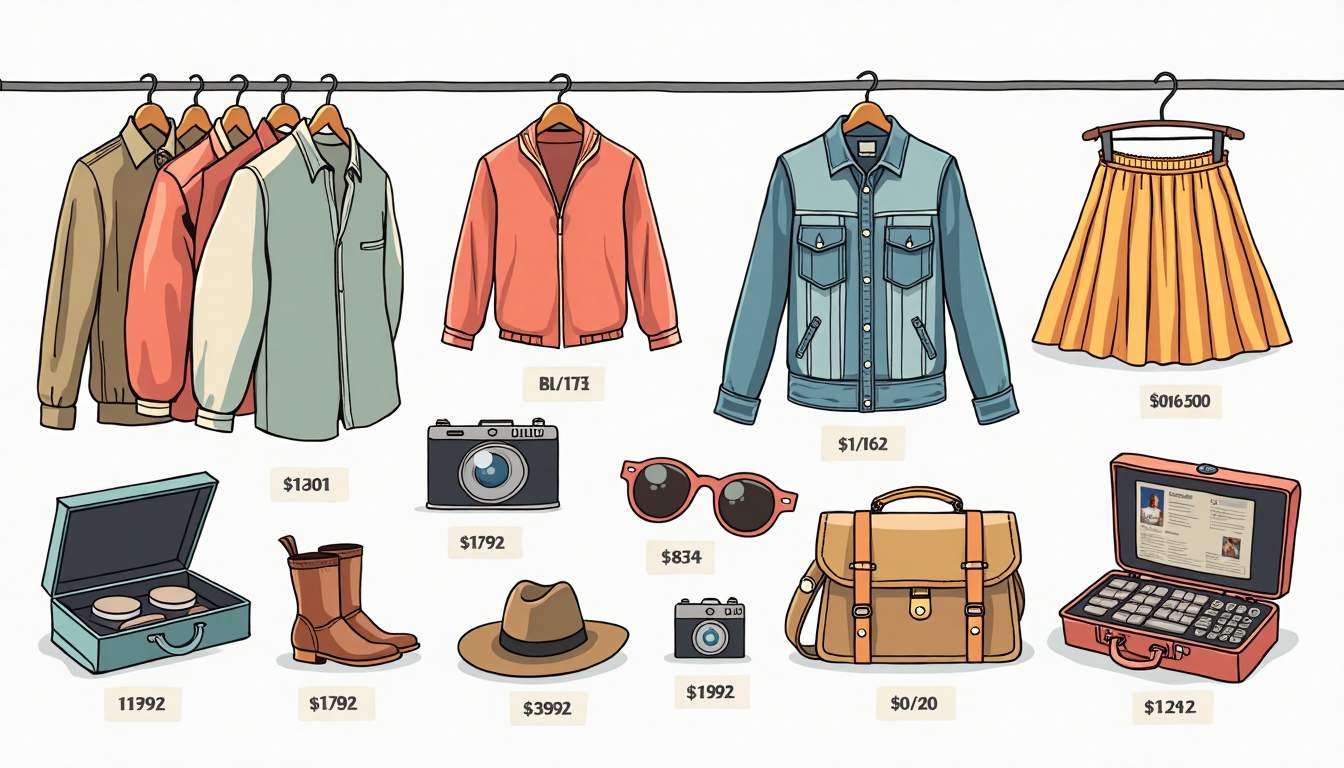Flipping items for profit has become a popular way to earn extra income, and for many, it’s a full-time venture. The concept is simple: buy low, sell high. However, the journey from novice to seasoned flipper requires knowledge, strategy, and a bit of creativity. This guide will walk you through the essentials of getting started in the flipping business, from understanding what flipping is to the best tools to help you succeed.
What is Flipping?
Flipping is the process of purchasing items at a lower price and reselling them at a higher price to make a profit. This can involve various products, including furniture, clothing, electronics, and collectibles. The key to successful flipping lies in identifying undervalued items, understanding market demand, and knowing how to effectively market and sell those items.

Flipping can be done both online and offline. Many flippers start by sourcing items from garage sales, thrift stores, or clearance racks and then sell them through online platforms or local marketplaces. The thrill of the hunt, combined with the potential for profit, makes flipping an exciting venture for many.
In addition to traditional venues, flippers are increasingly turning to online auctions and social media marketplaces to find hidden gems. Platforms like eBay, Facebook Marketplace, and Poshmark have revolutionized the flipping landscape by providing a broader audience for sellers and allowing for quick transactions. Savvy flippers often leverage their knowledge of trends and seasonal demands to time their purchases and sales perfectly, ensuring they maximize their profit margins. For instance, buying winter clothing in the off-season can yield significant returns when the colder months arrive.
Moreover, successful flippers often develop a keen eye for quality and craftsmanship, enabling them to spot items that may be undervalued due to superficial flaws that can be easily repaired or cleaned. This skill not only enhances their inventory but also allows them to educate potential buyers about the value of the items they are selling. Networking with other flippers and attending local flea markets or trade shows can also provide invaluable insights into pricing strategies and market trends, further enhancing their flipping capabilities. The community aspect of flipping fosters a shared enthusiasm for discovering unique items and transforming them into profitable ventures.
Best Items to Flip for Beginners
When starting out, it’s essential to choose items that are not only in demand but also easy to source. Here are some of the best items for beginners to consider flipping:

- Clothing: Thrift stores and clearance sales often have high-quality clothing at low prices. Brands like Nike, Patagonia, and vintage pieces can fetch a good resale value.
- Furniture: Upcycling furniture can be a profitable venture. Look for solid wood pieces that can be easily refurbished or painted.
- Electronics: Items like smartphones, laptops, and gaming consoles can be flipped for a significant profit, especially if they are in good condition or can be repaired.
- Collectibles: Items such as vintage toys, comic books, and sports memorabilia can be highly sought after. Researching trends in collectibles can lead to lucrative opportunities.
- Home Goods: Kitchen appliances, decor items, and tools are often available at low prices and can be sold for a profit.
Choosing the right items to flip is crucial. Researching market trends and understanding what sells well in your area or online can help you make informed decisions. Additionally, starting with items that you are familiar with can make the process more enjoyable and less daunting.
Another category worth exploring is seasonal items. Items like holiday decorations, winter sports gear, or summer outdoor furniture can be particularly lucrative during their peak seasons. For instance, purchasing Halloween costumes in late October or winter coats in early spring can lead to significant profits when resold at the right time. Keeping an eye on seasonal trends and knowing when to buy and sell can greatly enhance your flipping success.
Moreover, consider the potential of local marketplaces. Platforms like Facebook Marketplace, Craigslist, and OfferUp can provide access to a variety of items that are often sold at bargain prices. Engaging with your local community not only allows you to find unique items but also helps you build relationships with other sellers and buyers. This can lead to valuable insights about what items are in demand and what pricing strategies work best in your area.
Where to Source Cheap Products
Sourcing products at low prices is the foundation of successful flipping. Here are some effective places to find items to flip:
- Thrift Stores: These stores often have a wide variety of items at low prices. Regular visits can yield great finds, especially if you know what to look for.
- Garage Sales: Local garage sales can be treasure troves for flippers. Negotiating prices can lead to even better deals.
- Estate Sales: Estate sales often feature high-quality items at reasonable prices. Attending these sales can provide access to unique and valuable items.
- Online Marketplaces: Websites like Craigslist, Facebook Marketplace, and OfferUp allow users to list items for sale locally. These platforms can be excellent for finding undervalued products.
- Clearance Racks: Retail stores frequently have clearance sections where items are heavily discounted. Keeping an eye on these racks can lead to profitable finds.
Networking with other flippers can also provide insights into sourcing products. Joining local groups or online forums can help you discover new places to find items and share tips on the best deals.
Additionally, consider exploring local flea markets and swap meets, which can be fantastic venues for uncovering hidden gems. Vendors at these markets often sell unique handmade goods, vintage items, and collectibles at prices that allow for a good markup. Building relationships with regular vendors can also lead to insider knowledge about upcoming sales or exclusive deals. Another great resource is liquidation sales, where businesses sell off excess inventory or discontinued items at steep discounts. These sales can often be found through local business listings or liquidation websites, offering a chance to stock up on products that can be flipped for a profit.
Don’t overlook the power of seasonal sales and holiday clearances, as many retailers drastically reduce prices to make room for new inventory. Timing your sourcing efforts around these events can significantly enhance your profit margins. For example, purchasing holiday decorations right after the season can yield items that can be resold at a premium the following year. By keeping an eye on trends and understanding market demand, you can strategically source products that not only appeal to buyers but also maximize your flipping potential.
Where to Sell for Profit (eBay, Facebook, Vinted)
Once you have sourced your items, the next step is to sell them. There are numerous platforms available, each with its own advantages and target audiences:
- eBay: One of the largest online marketplaces, eBay allows you to reach a vast audience. Auctions can create bidding wars, potentially increasing your profit margin.
- Facebook Marketplace: This platform is ideal for selling locally. It allows for easy communication with buyers and eliminates shipping costs.
- Vinted: Focused on clothing and accessories, Vinted is a great platform for selling fashion items. It’s user-friendly and has a built-in community of buyers.
- Poshmark: Similar to Vinted, Poshmark specializes in fashion. It offers a social aspect where users can follow each other and share listings.
- OfferUp: This app is designed for local sales and is particularly useful for larger items that may be expensive to ship.
Choosing the right platform depends on the type of items being sold and the target audience. It’s often beneficial to list items on multiple platforms to maximize exposure and increase the chances of a sale.
When selling on eBay, consider optimizing your listings with high-quality images and detailed descriptions. This not only attracts more buyers but also helps in building trust. Additionally, eBay’s feedback system allows you to establish a reputation, which can be crucial for future sales. On the other hand, Facebook Marketplace offers the unique advantage of connecting you directly with buyers in your community, allowing for a more personal touch in negotiations. You can even arrange meet-ups in public places for a safe transaction experience.
Vinted and Poshmark both emphasize the importance of community and engagement. On these platforms, sharing your listings and participating in discussions can significantly enhance visibility. Vinted also allows users to swap items, which can be an exciting way to refresh your wardrobe without spending additional money. Meanwhile, Poshmark hosts virtual parties where sellers can showcase their items to a targeted audience, creating a fun and interactive shopping experience. Each platform has its nuances, so taking the time to understand them can lead to greater success in your selling endeavors.
Tools & Apps to Help You Flip Faster
In the digital age, leveraging technology can significantly enhance the flipping process. Here are some tools and apps that can help streamline your flipping operations:
- Inventory Management Apps: Tools like Sortly or InventoryLab can help keep track of your items, sales, and profits, making it easier to manage your flipping business.
- Photo Editing Apps: High-quality photos are crucial for online sales. Apps like Canva or Snapseed can enhance your images, making them more appealing to potential buyers.
- Price Comparison Tools: Websites like CamelCamelCamel or Google Shopping can help you track pricing trends and ensure you’re pricing your items competitively.
- Shipping Apps: Tools like Pirate Ship or ShipStation can simplify the shipping process, offering discounted rates and easy label printing.
- Social Media: Utilizing platforms like Instagram or Pinterest can help promote your items and attract potential buyers through engaging content.
Using these tools can save time, enhance productivity, and ultimately lead to higher profits. Embracing technology in the flipping process allows flippers to focus more on sourcing and selling rather than getting bogged down in administrative tasks.
Additionally, consider incorporating analytics tools such as Google Analytics or Facebook Insights into your strategy. These platforms provide valuable data on customer behavior and engagement, enabling you to tailor your marketing efforts more effectively. By understanding which items attract the most attention or which platforms yield the highest conversion rates, you can refine your approach and maximize your sales potential.
Moreover, exploring community forums and online groups dedicated to flipping can also be beneficial. Platforms like Reddit or Facebook Groups often have experienced flippers sharing tips, tricks, and insights that can help you navigate challenges and discover new opportunities. Networking with others in the flipping community can provide support, inspiration, and even collaboration possibilities, enhancing your overall flipping journey.
Conclusion
Flipping items for profit can be a rewarding and lucrative venture. By understanding the basics of flipping, knowing where to source items, and effectively utilizing online platforms, anyone can embark on this journey. With the right tools and a bit of creativity, flipping can turn into a profitable side hustle or even a full-time business.

Whether you’re looking to declutter your home, earn extra cash, or dive into a new entrepreneurial venture, flipping items offers an exciting opportunity. Start small, learn as you go, and enjoy the process of discovering hidden treasures and turning them into profit.
